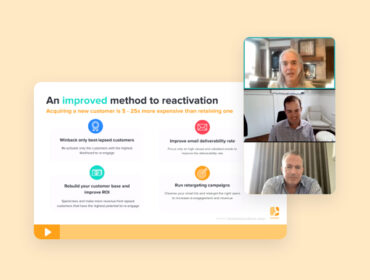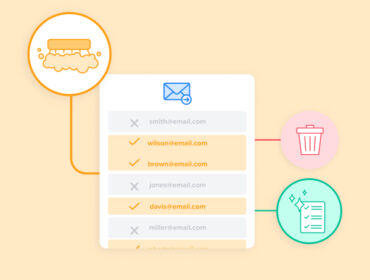Industry Pulse Survey: The role of email in identity post third-party cookies

When cities across the globe shut down in hopes of containing the spread of COVID-19, the world was unaware that it sat on the precipice of both a health and financial crisis. Shortly after, we faced the worst global economic recession since The Great Depression. An original two-week lock down turned into four, then six, and so on, driving entire industries to a halt; advertising and publishing were not without exception.
Consumer behavior changed in new and previously unimaginable ways, leaving advertisers to adapt nearly overnight. Discretionary spending reached an all-time low, and with news cycles rife with COVID-19 headlines, not only did advertisers cut back on ad budget, but they blocked impressions on content with words like COVID-19, pandemic, and coronavirus. So broad was the demonetization of content that it affected about 46 percent of publishers, driving them to lay off or furlough employees, with some shuttering their businesses entirely.
The worldwide rollout of vaccines has cultivated a renewed sense of hope, a feeling that the world will soon emerge from this dark period, although not without significant loss. While things are looking up for the rest of the world, the future of digital publishing and advertising is still very much uncertain, however.
Adapting to a new world
We’ve seen the impact of the pandemic on consumer behavior and lifestyles. And although the changes may not be permanent, they will undoubtedly remain as the status quo for the foreseeable future. Now, with changes to consumer privacy, tracking, and retargeting underway, publishers and advertisers will need to continue to adapt.
In March of 2021, LiveIntent surveyed more than 200 senior marketing and publishing executives from small to mid-sized companies, with newsletters ranging from 10,000 to over 1 million subscribers. We examined what these marketing and publishing professionals have learned during the pandemic, its impact on their business, and how they’ll leverage the email address in the face of continued uncertainty as it pertains to identity resolution.
The industry recognizes email newsletters as a powerful channel for reaching audiences and creating authentic relationships, which explains why nearly 36.6 percent of survey respondents use email as a primary way of building deep connections with audiences, while another 34.6 percent use email to secure subscriptions and drive sales.
87.2 percent of marketers and publishers invest in newsletters or email advertising, while a whopping 96.9 percent currently monetize their email sends. These are strong indicators of the renewed interest in email newsletters and increased demand for ad inventory within the medium.
Yes: 87.2%
No: 12.8%
In-email advertising: 64.9%
High CPM traffic to our site: 51.8%
Affiliate sales: 45.5%
Other: 5.8%
We don’t but are looking into it: 3.1%
What is your organization’s primary goal with email?
Collect valuable first-party data: 28.3%
Build a deeper connection with our audience: 36.6%
Drive sales or subscription sign-ups: 34.6%
Other: 0.5%
Impact of COVID-19 on marketing and publishing
Email newsletters have enabled publishers and marketers to further their shopper and subscriber relationships directly; this has been especially true during the pandemic. 48 percent of survey respondents report an increase in their open rates, data that supports that consumption habits have changed, and people are eager to connect with their favorite brands and engage with content that brings them value.
And as newsletter attention and readership increase, so do CPMs. More than 53 percent of respondents report CPMs having increased during the pandemic, indicating lucrative times. And, as the adage says, you have to spend money to make money. As CPMs increase, so have investments in the email channel; 52.3 percent of respondents reporting an increased investment in email, another signal of the email newsletter boom.
How has your open rate performed during COVID-19 compared to the previous year?
Significantly decreased: 6.3%
Slightly decreased: 24.1%
Stayed the same: 21.5%
Slightly increased: 27.2%
Significantly increased: 20.9%
How have your email CPMs performed during COVID-19 compared to the previous year?
Significantly decreased: 6.3%
Slightly decreased: 13.6%
Stayed the same: 26.7%
Slightly increased: 34.6%
Significantly increased: 18.8%
How has your financial investment towards the email channel changed over the last year?
Significantly decreasing: 5.2%
Slightly decreasing: 16.2%
Staying the same: 26.2%
Slightly increasing: 34.0%
Significantly increasing: 18.3%
Applying what we learned in 2020 to 2021
The pandemic brought sudden and unexpected change, and brands and publishers had to adapt quickly. Those that persevered implemented strategies that emphasized diversification.
90 percent of survey respondents recognize that email is vital to their business’s future growth. That’s because email newsletters enable publishers and marketers to diversify their monetization strategies and acquisition channels, which mitigates risk and uncertainty. And after a year like 2020, establishing stability and security is a priority for most. So, it’s unsurprising that 95 percent of survey participants have prioritized scaling their email programs through the remainder of 2021.
Agree or disagree: Scaling our email program is a priority for our organization in 2021.
Agree: 94.2%
Disagree: 5.8%
How important is the email channel to the future growth of your business?
Extremely important: 51.8%
Very important: 38.7%
Somewhat important: 8.4%
Not important: 1.0%
Although Google intended to eliminate third-party cookies in the Chrome browser in 2022, Google recently announced that it is delaying its plans until 2023.
Since Google initiated the change at the start of January 2020, it had yet to roll out a solution that satisfied the industry’s needs and concerns. According to Google, the decision to delay phasing out third-party cookies to mid-2023 allows more time to work closely with regulators to develop new technologies to replace third-party cookies. Regardless of Google’s decision to delay, the industry already knows what they’ll need to focus on to ensure success once third-party cookies phase out in 2023.
99 percent of survey respondents believe that the email address is vital to the future of identity resolution after the third-party cookie’s demise. Although the industry may be undecided on a preferred solution, and the efficacy of those solutions may still be in question, 47.6 percent of publishers and marketers recognize that email will undoubtedly be part of the solution to identity resolution. Another 48.2 percent believe email will be at the heart of it.
What is the most valuable type of first-party data?
Email address: 25.6%
Name: 22.4%
Phone Number: 14.6%
Behavioral data: 37.0%
Extremely important: 51.8%
Very important: 38.7%
Somewhat important: 8.4%
Not important: 1.0%
What role do you view email having in the future of identity resolution?
It will be at the heart of identity solutions: 48.2%
It will be part of identity solutions: 47.6%
Although important for other reasons, it will not be a part of identity resolution: 4.2%
Does the use of an anonymous email hash meet consumer privacy requirements?
Yes: 78.0%
No: 22.0%
Looking ahead
Email is a tried and true medium that continues to prove its versatility and worth. Although Google has delayed its plans to sunset third-party cookies, it still behooves brands and publishers to prepare for that eventuality by testing new and old channels to inform their future monetization and acquisition strategies.As you forge forward in a cookieless future, don’t overlook email or the power of the email address.


